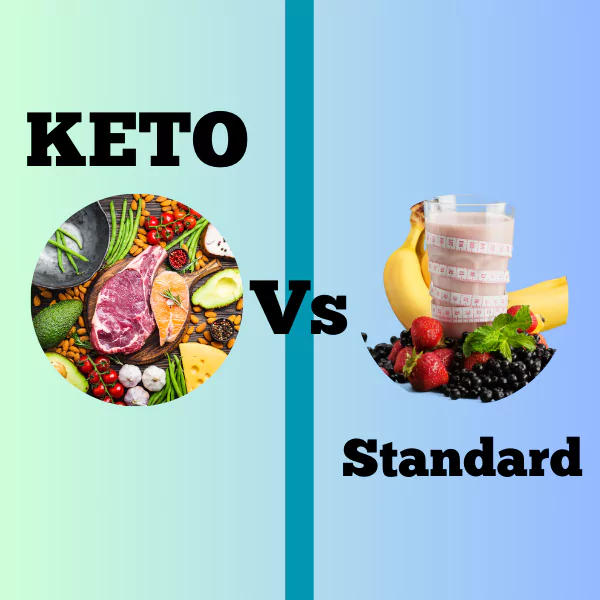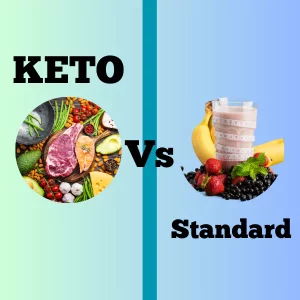
Is Keto or a Standard Diet Right for You
Introduction
In today’s world, various diet trends and lifestyles are gaining popularity, making it essential to understand the differences between the Keto Lifestyle and a Regular Diet. By delving into the specifics of these approaches, individuals can make informed choices for their health and well-being.
Understanding the Keto Lifestyle
The Keto Lifestyle is centered around the principles of drastically reducing carbohydrate intake and increasing fat consumption. This dietary approach aims to shift the body’s metabolism into a state of ketosis, where it relies on fat for energy instead of carbohydrates.
Benefits of the Keto Lifestyle
- Weight loss: By promoting the burning of stored fat, the Keto Lifestyle can aid in weight loss. When the body is in ketosis, it becomes more efficient at utilizing fat as fuel, leading to a reduction in body fat.
- Mental clarity and focus: Many individuals report improved cognitive function and mental clarity while following the Keto Lifestyle. This may be attributed to the stable energy levels and the absence of blood sugar spikes associated with carbohydrate-rich diets.
- Increased energy levels: The Keto Lifestyle is often associated with increased energy levels. By tapping into fat stores for fuel, the body can sustain a steady supply of energy throughout the day.
What Exactly is Ketosis
Ketosis is like a metabolic symphony within your body, orchestrated when you adopt a low-carb, high-fat diet. In this harmonious state, your liver transforms fats into molecules called ketones, which become the preferred fuel source for your cells. It’s a metabolic switch that shifts your energy production from glucose to fat, leading to increased fat burning and weight loss. Ketosis can also provide mental clarity, reduced hunger, and improved insulin sensitivity, making it not just a physiological transformation but a path to enhanced well-being.
Challenges of the Keto Lifestyle
- Initial adjustment period: During the transition into ketosis, individuals may experience symptoms such as fatigue, headaches, and irritability. These symptoms, commonly referred to as the “keto flu,” are temporary and usually subside within a week.
- Limited food choices: The Keto Lifestyle restricts the consumption of foods high in carbohydrates, which can be challenging for those accustomed to a diet rich in grains, fruits, and starchy vegetables. However, with proper planning and creativity, a wide variety of delicious and satisfying meals can still be enjoyed on the Keto diet.
Exploring the Regular Standard Diet
In contrast to the Keto Lifestyle, the Regular Diet focuses on a well-balanced approach to nutrition, encompassing a variety of macronutrients. A regular diet typically includes a balanced intake of carbohydrates, fats, and proteins. This standard type of diet is what many would consider the basic way to adjust their eating habits. It calls for moderation in food portion sizes as well as reduced intake of sweets and high fat foods, but does not necessarily require completely removing these items from your diet completely.
Benefits of the Regular Diet
- Adequate nutrient intake: By incorporating a wide range of foods from different food groups, the Regular Diet ensures individuals receive all the essential vitamins, minerals, and other nutrients necessary for optimal health. This balanced approach helps prevent nutrient deficiencies and supports overall well-being.
- Flexibility in food choices: The Regular Diet offers individuals the freedom to enjoy a diverse range of meals and flavors. This aspect contributes to the long-term sustainability of the diet, as it can be easily adapted to individual preferences and cultural backgrounds.
Challenges of the Regular Diet
- Portion control: One of the challenges of the Regular Diet is maintaining portion control, especially with the abundance of calorie-dense foods readily available. It requires mindful eating habits and awareness of serving sizes to avoid overeating.
- Consumption of processed foods: The Regular Diet can become problematic when individuals rely heavily on processed foods. These foods are often high in unhealthy fats, sugars, and additives, which can negatively impact overall health. It is important to prioritize whole, unprocessed foods to maintain a healthy regular diet.
Other Types of Diets
The following are other types of diets that originated from specific regions or cultures around the world. They tend to focus on a particular type of food group that’s prevalent in that region.
- Mediterranean Diet: This diet, inspired by the eating habits of countries bordering the Mediterranean Sea, emphasizes fruits, vegetables, whole grains, fish, and healthy fats like olive oil. It’s associated with lower rates of heart disease and longer life expectancy.
- Japanese Diet: Traditional Japanese cuisine is characterized by its use of fresh fish, tofu, seaweed, and fermented foods like miso and natto. The Japanese diet is known for its health benefits, including lower rates of obesity and chronic diseases.
- Mesoamerican Diet: The diet of ancient civilizations like the Aztecs and Maya included maize (corn), beans, squash, and chili peppers. These staples continue to be important in modern Mexican and Central American cuisine.
- Indian Vegetarian Diet: Many traditional Indian diets are plant-based and include lentils, rice, vegetables, and spices. The variety of flavors and ingredients in Indian cuisine make it both nutritious and flavorful.
- Vegan Diet: Veganism, which avoids all animal products, has been practiced for ethical, environmental, and health reasons. Plant-based diets have gained popularity in recent years due to their potential health benefits.
- Raw Food Diet: This diet involves consuming uncooked, unprocessed foods, often including fruits, vegetables, nuts, and seeds. Advocates believe that cooking destroys essential nutrients.
- Intermittent Fasting: While not a traditional diet per se, intermittent fasting has historical roots in various cultures and religions. It involves cycling between periods of eating and fasting, which may have potential health benefits.
- Traditional Asian Diets: Diets in various Asian countries, such as China, Korea, and Thailand, feature a balance of rice or noodles, vegetables, lean proteins, and seasonings like soy sauce or fish sauce.
- Nordic Diet: Inspired by the foods of Scandinavian countries, this diet emphasizes fish, whole grains, berries, and root vegetables. It’s associated with health benefits similar to the Mediterranean diet.
Summary
In conclusion, both the Keto Lifestyle and Regular Diet have their merits and considerations. The Keto Lifestyle offers potential benefits such as weight loss, improved mental clarity, and increased energy levels, but it requires adjusting to a limited food selection. On the other hand, the Regular Diet provides adequate nutrient intake and flexibility in food choices but requires portion control and avoidance of processed foods. Ultimately, the choice between these two approaches depends on individual goals, preferences, and health considerations. It is recommended to consult with a healthcare professional or registered dietitian to determine the most suitable dietary approach for optimal health and well-being.
FAQ
Q: What is the Keto Lifestyle?
A: The Keto Lifestyle is a dietary approach that involves reducing carbohydrate intake and increasing fat consumption to shift the body’s metabolism into a state of ketosis.
Q: What are the benefits of the Keto Lifestyle?
A: The benefits of the Keto Lifestyle include weight loss, improved mental clarity and focus, and increased energy levels.
Q: What are the challenges of the Keto Lifestyle?
A: The challenges of the Keto Lifestyle include an initial adjustment period with symptoms such as fatigue and headaches, as well as limited food choices.
Q: What is the Regular Diet?
A: The Regular Diet is a well-balanced approach to nutrition that includes a variety of macronutrients, such as carbohydrates, fats, and proteins.






